How to Clean, Sanitize, & Sterilize Pacifiers
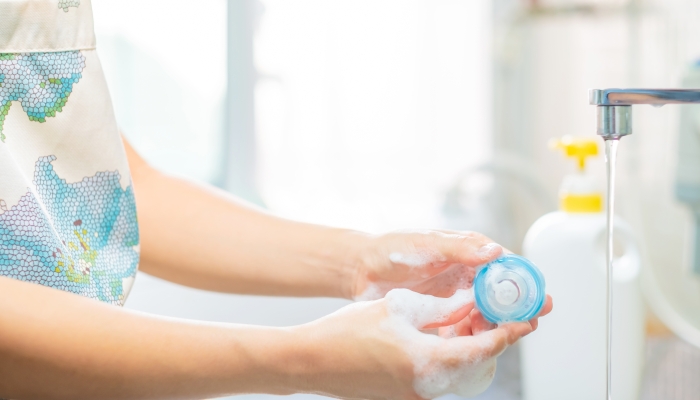
- Baby pacifiers need routine cleaning daily.
- Cleaning pacifiers only washes away surface dirt and germs.
- You can use soap, vinegar, or wipes to clean your child’s pacifier.
- Sterilizing kills microorganisms cleaning cannot.
- Boiling, dishwashing, and microwaving are the main sterilizing methods.
We’ve all been there. The slow-motion scenario as you watch your baby’s pacifier fall to the ground. It’s always when you’ve only packed one or are in a hurry, am I right? Now you’re left with the often comical parenting decision that divides most of us into two camps: the ones who clean it and the ones who give it right back to their baby.
No matter your camp, at the end of the day, all parents can agree that pacifiers need cleaning at one point or another. Whether you’re looking for what cleaning solution to use or trying to learn how to sterilize pacifiers, we have you covered!
How Often Should Pacifiers be Cleaned?
With the amount of use they get, it’s no surprise that even the best pacifiers get grimy. It’s recommended to clean your baby’s paci daily. If you can run it under some warm and soapy water a few times a day, more power to you!
It’s important to note that cleaning and sanitizing are used interchangeably to mean ridding the pacifier of regular dirt and harmful germs. Sterilizing pacifiers is an entirely different process that kills hidden germs.
3 Ways to Clean and Sanitize Pacifiers
There are a few different ways you can keep pacifiers clean. Here are the most common methods:
- Soap and Water: The most common way to clean pacifiers is dish soap and water. Be sure to let the soap penetrate all the cracks and holes, rinsing thoroughly.
- Vinegar: Frequently used as a natural alternative to toxic over-the-counter house cleaners, vinegar is a safe and easy option. Fill a container with equal parts water and vinegar to soak the pacifiers.
- Pacifier Wipes: New to the game, pacifier wipes are a quick and convenient way to clean on the go. Made with 100% food-grade ingredients, you don’t have to worry about chemicals making it into your baby’s mouth. Considered a new addition to diaper bag essentials, they can definitely come in handy!
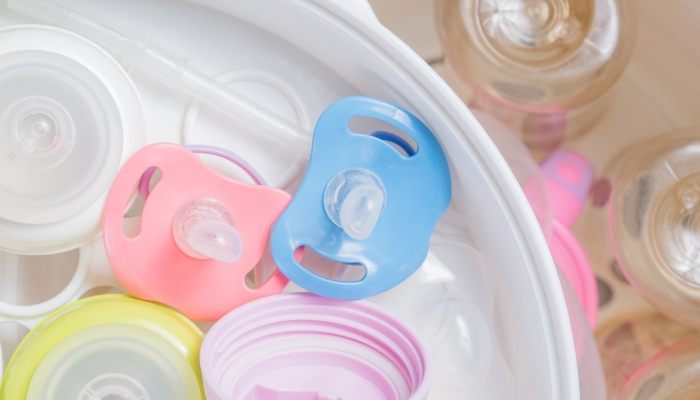
Do You Need to Sterilize Your Baby’s Pacifier and How Often?
You need to sterilize your baby’s pacifiers regularly. Sterilizing takes cleaning to another level, killing all the microorganisms that likely aren’t killed in a simple clean. This is your best bet at keeping your baby’s pacifiers free from illness-causing bacteria.
Keep in mind a brand-new pacifier out of the box should be sterilized too. It’s tempting to think that since it’s new, it’s clean. The truth is, though, you never know what bacteria it may have picked up in the manufacturing and packaging process. Before giving it to your baby, sterilize them to be safe!
Doctors recommend sterilizing pacifiers regularly. While there are differing opinions on how often that should be, the consensus is once a month, barring any special circumstances like a recent illness. You can stop the sterilization process after your baby is 6 months old.
How to Sterilize Pacifiers
Whether you prefer more traditional means or new-age solutions, there are several ways to sterilize a pacifier, according to the Centers for Disease Control and Prevention. Wondering which method is best for sterilizing pacifiers? The good news is they all have the same germ-free results!
Learn how to sterilize pacifiers through the effortless methods below, all using hot water or steam:
- Boil Method: Considered the old-school way to sterilize, boiling pacifiers is a great way to kill bacteria. You’ll need to bring a pot of water to a full boil and immerse the pacifiers in the boiling water for five minutes. Fun fact: Boiling water is a method used to sterilize baby items beyond just pacis—you can sterilize bottles and bottle nipples this way too!
- Dishwasher Method: My favorite method is the dishwasher cleaning method. Just toss your baby’s pacis in a dishwasher-safe basket on the top rack and let them run through a high-heat cycle.
- Microwave Method: You can purchase steam sterilizers in a tray or case, allowing you to sterilize using the microwave. Depending on the brand, it can take as little as 3 minutes! Items vary, so check your manufacturer’s instructions before putting them in the microwave!
While there are special sterilizing machines you can purchase, like UV or steam sterilizers, I wouldn’t recommend them. Aside from being hugely expensive, they make the list of unnecessary baby gear when the methods above are practical and convenient for nearly all households.
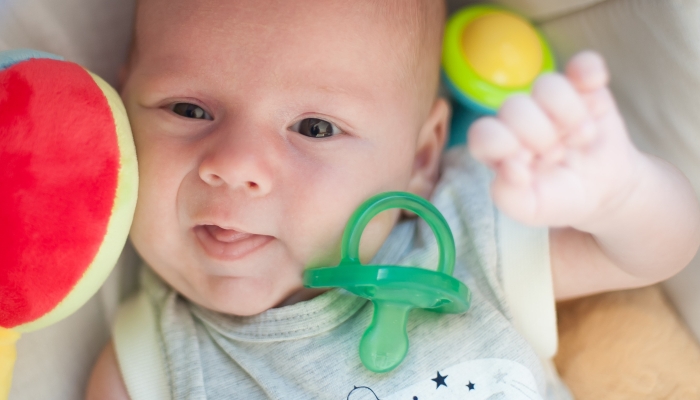
FAQ
How many pacifiers does a baby need?
Most parents will recommend that you have around 2 or 3 pacifiers for your baby. This allows you to have one in use, an extra one on hand, and likely one being sterilized.
I recommend having a few more. While that system may work at home, it doesn’t take into consideration the hustle and bustle of life.
I like to keep extras in the diaper bag, car console, and stroller as well. If you’re anything like me and often forget to grab everything on the way out the door, these extra stashes will come in handy!
Is it okay to suck on a baby’s pacifier to clean it?
A controversial method to cleaning a baby’s pacis, some parents pop the pacifier in their mouth, thinking they’re taking on the brunt of whatever germs it may have picked up. While the intent is right, the methodology is not so much.
It’s not recommended to clean a baby’s paci by putting it in your mouth.
You could be transferring your own bacteria to your baby by doing this, maybe even an illness you didn’t even know you had! Because of this, it’s recommended you use one of the methods previously discussed (soapy water, vinegar, or wipes) to cleanse a dirty paci.
When should you replace your baby’s pacifier?
The answer to this hinges on how much your baby uses the pacifier. Some say you should replace pacifiers monthly, while others say to hang on to them until they show wear and tear.
With as many pacifiers as we’ve lost, I can tell you my family errs on the latter side. It’s essential to inspect pacifiers regularly, though. Look for any punctures, cracks, discoloration, or anything else out of the ordinary. For the safety of your baby, throw away any with wear and tear and move on to the next!
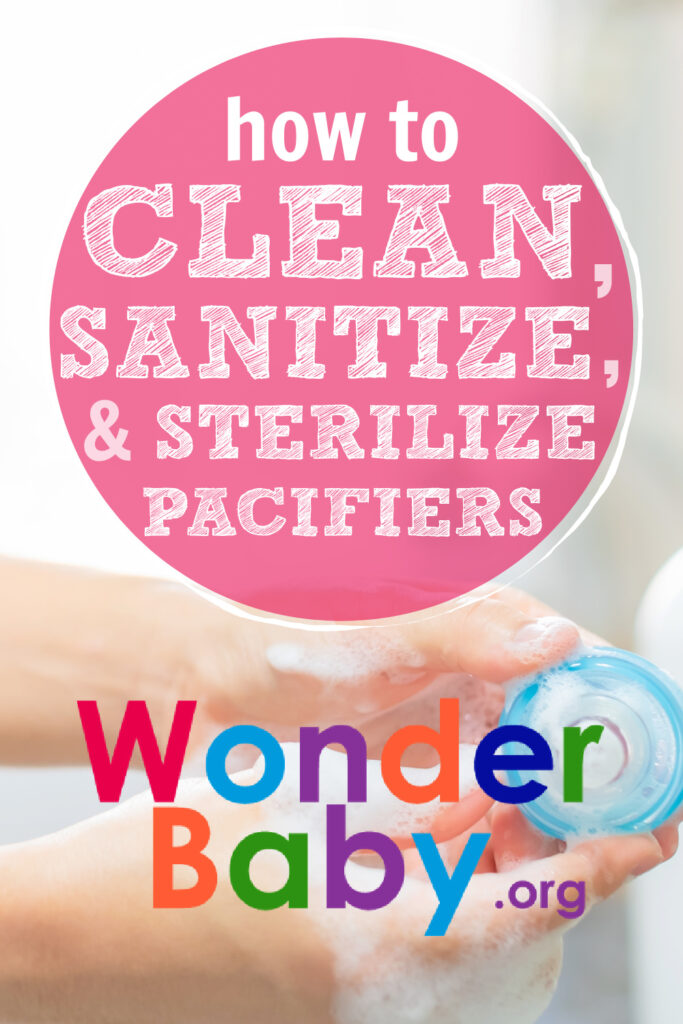
Related Posts
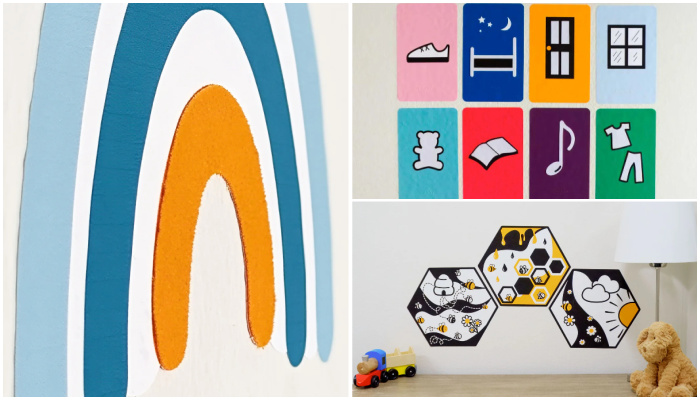
Parenting
Sensory Wall Art: 5 Tips to Create a Room Your Blind or Low-Vision Child Will Love
Even if your child can’t see their surroundings, personalizing and decorating their room with thoughtful, sensory-friendly design can make a big difference in their confidence, independence, and joy.
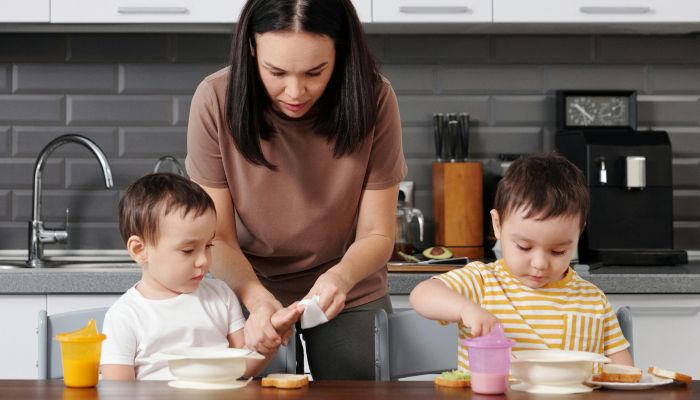
Parenting
4 Tips to Manage Twins Alone as a Single Parent
Taking care of twins alone as a single parent can feel overwhelming. Learn practical ways to help lighten the load.
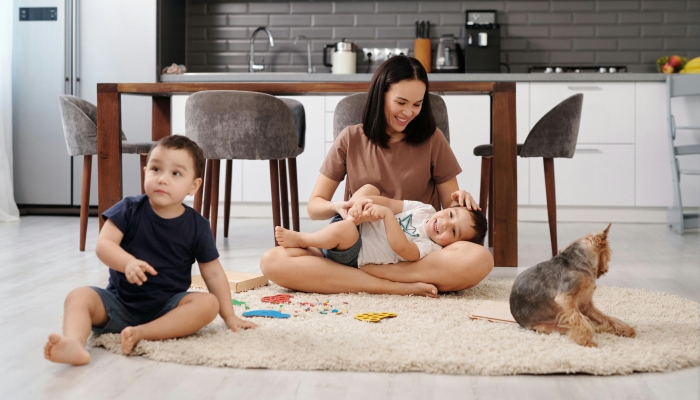
Parenting
How to Manage Twin Escalation Syndrome
Discover effective strategies for managing twin escalation syndrome, including promoting individuality and fostering positive interactions.